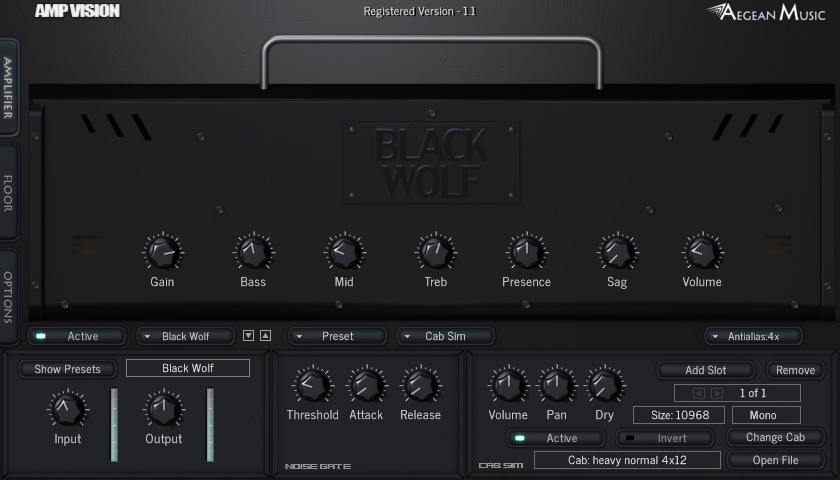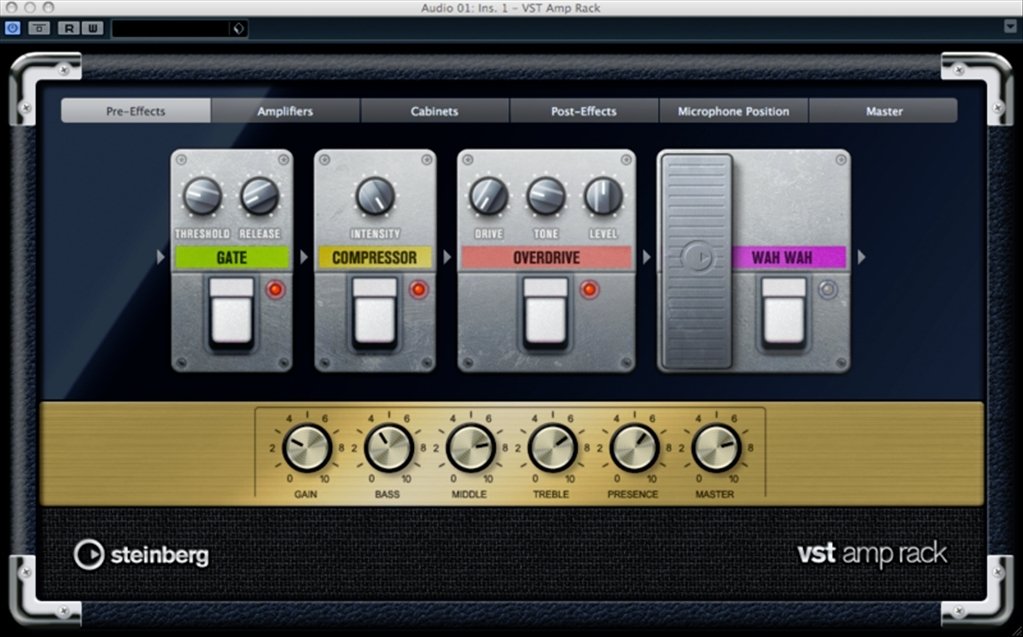Vst Amp Rack Download

The VST Amp Rack includes seven amp/cab models, covering a wide range of possible tones. Guitar players, myself included, often argue over the tonal merits of real amps relative to virtual ones. But whatever your views on plug-in guitar-amp simulations, you can't deny that they present some very useful possibilities, not all of which are confined to guitars. So this month we'll explore a few examples of how the VST Amp Rack, which was introduced in Cubase 6, can be put to good use. To use the VST Amp rack for guitar tones, you'll first need to get a DI signal from your guitar into Cubase. Most modern audio interfaces have an input or two that can work quite happily with a direct guitar-level signal, but if yours doesn't, you'll need a DI box that can send one signal 'thru' to your amp and another to your interface's mic input. You can choose to record this DI signal alongside the output from an amp or hardware modeller, in which case the DI and amp signals should be recorded on separate Cubase tracks, to give you flexibility later.
Download all the best free VST amps plug-ins. Valve or tube amplifier simulators and classic guitar amplifiers! Free VST downloads: 7170 Lead (Lead guitar amp by Nick Crow Lab) - 8505 Lead (Lead guitar amp by Nick Crow Lab) - Ace (Vintage tube amp by Shattered Glass Audio) - Amplifikation Lite (Guitar amp / IR loader by Kuassa) - Amplistortion (Guitar multi-effects by RCVPROD) - AradazAmp Crunch (Amp simulator by Aradaz) - AradazAmp Green (Amp simulator by Aradaz) - AradazAmp White (Amp simulator.
The VST Amp Rack's primary function is, of course, to create some decent guitar tones. You have seven amp and six cabinet choices which, as hinted at by the graphic styling, include models based upon three Fender classics, a couple of Marshalls, a Vox and a Mesa Boogie.
You can combine the different amp and cab types to give you quite a wide range of tonal starting points. All the amps are capable of decent clean tones, but the best choices are probably the Fender- and Vox-based models.
For super-clean, back off on the gain settings or, for a bit more twang (via the Tweed amp) or grit (for example, via the Vox amp), start with the gain about halfway and adjust to taste. With a little more gain, or the addition of an overdrive pedal in a pre-effects slot, you can create a range of 'just breaking up' tones — perfect if blues is your thing.

The Plexi model can also do this at lower gain settings, while for straight 'rawk', both Plexi models can do the business. For a more saturated overdrive, the Plexi Lead and Diamond (Mesa Boogie) models are your best bet.
You also get a decent selection of emulated stomp-box effects that can be placed pre- or post- the amp/cab modelling, a choice of microphone type and position and a 'master' section with EQ, a tuner and master output level control. In short, for a bundled plug-in this is a pretty decent package! So that you can hear the differences between the various models, I've created some short audio examples, and these are available via the SOS web site () for you to audition.
Data such as voltage, current and state of charge can also be displayed digitally as figures on the display Hybrid controller. State of charge determination with Steca Aton. IC (SOC)Automatic detection of voltage. Multistage charging technology. Load disconnection depending on SOCAutomatic load reconnection. Temperature compensation. Pwm solar charge controller circuit.
In addition, there are audio examples to illustrate each of the VST Amp Rack applications described below. Hopefully, listening to these while reading the text will give you a better idea of what can be achieved. For both corrective and creative applications, there's a good selection of virtual stomp boxes. It's one thing creating the perfect tone for while you're playing the guitar, but at mixdown you might find that your chosen sound is inappropriate.
For example, you might decide the original sound requires more or less gain in order to sit well in the mix. In a traditional recording environment, a DI signal is often recorded alongside the miked amp so that, at mixdown, this DI signal can be fed back to the same or a different amp, the tone tweaked to best fit the mix, either by tweaking the amp settings or changing and moving microphones, and then re-recorded to replace the original. While the results can sound great, this technique can be a bit of a faff — and one of the key advantages of plug-in amp-sims like VST Amp Rack is that they make the process a breeze to perform: you already have your DI'ed guitar part, so you just change the Amp Rack settings to suit the mix. Another common traditional recording technique is to layer several guitar sounds using different amps, blending the sounds as desired at mixdown to create a fuller tone.